
Coots Flock Together for Twenty Years

I enjoy feathered water birds as well as mechanical ones, and the COOT is no exception. Imagine my delight when I arrive at Lake Mendota sometimes to find my COOT resting at anchor amidst a huge flock of real live coots! One time I waded out very slowly and started up the engine. Oh, that startled them alright, but instead of flying off in every direction, they came right along with me into the wind! As I lifted off the water, they were still all around me, some above, some off each wing, and some below, still struggling to break free of the water. We were a cloud of coots;- a big mechanical mama with her brood. It was one of the most wonderful moments of my life, and I regretted my faster airspeed that left them behind all too soon.
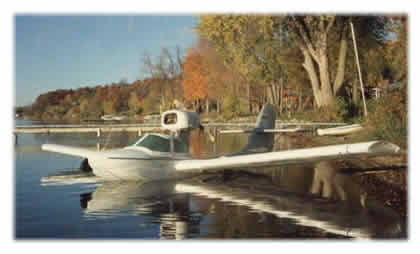
As the Coot-builder's Newsletter starts its 20th year this month, I recall that I haven't been able to start every issue on such a cheerful note. But it's been a fascinating saga of the ups and downs of over 100 builders through the years, and I'll share it with you here, along with some Coot history.
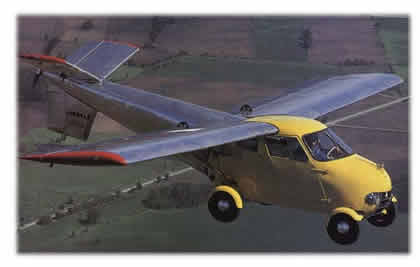
It all started with Molt Taylor, one of the grand old names in original airplane design. Among his credits are the Coot, the Mini-Imp, and the Bullet. By far, his most ambitious under-taking was the Aerocar, a car-aircraft convertible. Built in the 1950's, it came the closest of any car-plane toward reaching the market. But the "sleeper" in Molt's stable of aircraft was the Coot amphibian.

During World War 2, Molt participated in designing a "float-wing" glider for the Navy that would carry troops behind enemy lines. The wings emerged from the hull just above the water line, so the wing roots became sponsons for lateral stability in the water and obviated the need for wing-tip floats. The close proximity of wings to water gave superior ground effect for lower take-off and landing speeds. So when Molt was asked to design a homebuilt amphibian in the late 60's, it was natural for him to combine his previous military experience with his knowledge of folding wings from the Aerocar.
The first sketches on Molt's drawing board had a blunt nose, rather like Spencer's Aircar or the Seabee, but later versions had the now-familiar sharp nose with a windshield like a motor-boat. No longer the "ugly duckling" in Molt's mind, it was named after the mud hen that runs on the water for a while, gathering speed in ground effect, more often known as the Coot.
I refer to the Coot as Molt's "sleeper" because of its instant popularity among homebuilders, which took him by surprise. But to anyone who has listened to one of Molt's Oshkosh forums on amphibian design, it is not surprising that the Coot caught people's attention. Not only is it very well designed, but most people agree that the Coot is sensibly good looking. Combine that with its wing-folding and amphibious utility, and many a pilot with water experience will be attracted to it.
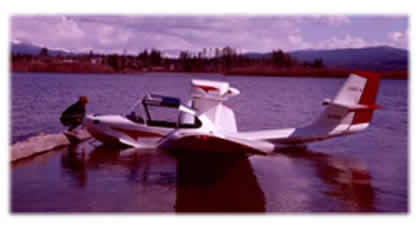
During the early '70's several circumstances contributed further to the popularity of Molt's Coot. First, Sport Aviation ran a feature article in April 1972, with a magnificent photo of Molt lifting off the water on the front cover. Either his prototype or a sister ship, owned by Warren Eding, was at the Oshkosh convention every summer. Molt and others sold a variety of difficult-to-make fiberglass and other components. In 1974 I organized Molt's rambling construction notes into an indexed, 75-page document, and that led naturally to a bi-monthly newsletter.
It started with a 4-page description of Oshkosh '75 addressed to 50 Coot-builders who had been listed in Sport Aviation. Soon after that Molt and many of the 100+ subscribers were contributing ideas and photos for an expanded, 7- to 8-page letter. At first we focused on things that hadn't been covered in great detail in the construction notes, such as the carburetor heat box, engine baffles and cowling, the canopy, and radio antennas. Later on, as more Coots left their nests, we delved into Coot performance in the air and on the water.
One of the first builders to complete his Coot, Ed White used a 200 hp Continental, constant speed prop and gently sloping windshield to obtain cruise speeds of 130 mph at 25" manifold pressure and 2400 rpm. Ed enjoys flying his Coot off to mountain lakes so much that he has flown it over 700 hours.
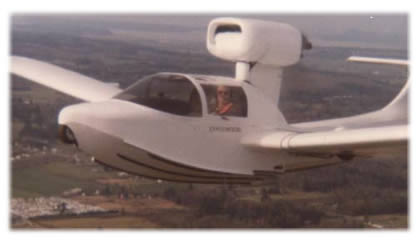
Shown below on a mountain lake, this well-travelled Coot was built by Paul Trudel, of Langley, B.C., Canada. Last summer Paul flew it to Oshkosh for the EAA Convention, and then on to Ottawa, Ontario, before flying home to B.C.
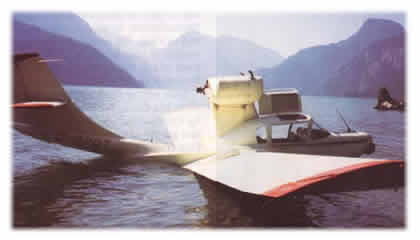
The most distant Coot was built by Lin Wheeler, Bay of Islands, New Zealand. The authorities there restrict homebuilts to a gross weight of 1800 lb., so N.Z. builders use smaller, 130 hp Franklin engines, and try to keep their airframes as light as possible.
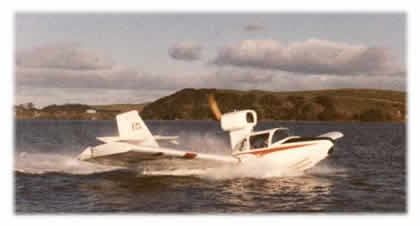
Engines chosen for use in Coots are usually Franklin, Lycoming or Continental, for Molt has strongly warned us of the difficulties adapting automotive engines for this purpose. However, an exception is Bill Motes, of Newport, N.C., who used a Mazda rotary engine in the installation shown below. Bill was quite satisfied with its performance, but unfortunately he developed arthritis, so he didn't have a chance to fly his Coot for long.
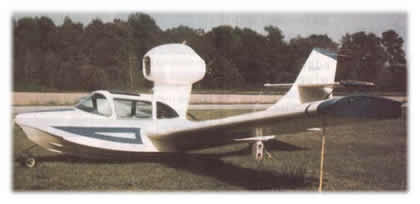
The amphibious nature of the Coot lends itself well to utilizing its aquatic environment for initial flight-testing. They just don't make runways as long or as wide as many of our inland lakes. This is demonstrated below by M. P. Hays, Eugene, OR, wearing a life jacket and ready for initial tests before applying the final coat of paint. Note the canopy door that slides rearward, allowing the pilot to stand tall and shout orders to the cameraman!
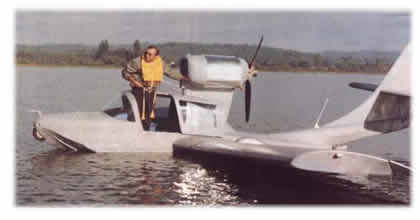
A continuing thread that ran through the newsletter for about a decade was my own saga of difficulties with a constant speed propeller on an under-powered, reverse-rotation engine, as well as an unusual "sandwich" type of fiberglass hull that had a tendency to delaminate. I will not repeat the gruesome details here, but I will share with you some of fun that I enjoyed on many an autumn evening after work.
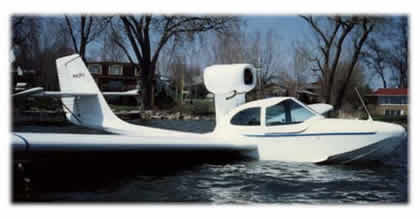
As shown above, I removed the landing gear at one point (to save weight) and converted my Coot to a flying boat configuration. With folding wings it was relatively easy to keep it on a modified boat trailer in the winter, and unfold the wings at a lakeside boat ramp in the spring. There were, of course, challenges in finding a suitable, protected cove for it, a safe means of refueling it, and so on, but there were definite joys of keeping it on the water. I began this article by lifting a paragraph from volume 17 of the newsletter, so I'll close now by paraphrasing another from volume 14:
As I untie the knot at the nose, slide backwards over the gunwale into the seat, kick the water off my waders and buckle in, I feel a sense of anticipation that is a long way from the relaxation of stepping up to one's favorite bar for the "happy hour". Only a minute later I feel the hull mount over the bow wave, sense the sudden burst of speed, level the wings as the last skitter of wave tops tickles the keel, and then I climb up over that incredibly blue lake surrounded by lush green lawns and golden trees. On days like these I can't think of a better way to unwind and change gears from trying to outwit Nature's errors (i.e., curing cancer) to just enjoying the things she does so well (like making autumn colors).

